- Home
- TV History
- Network Studios History
- Cameras
- Archives
- Viewseum
- About / Comments
Skip to content
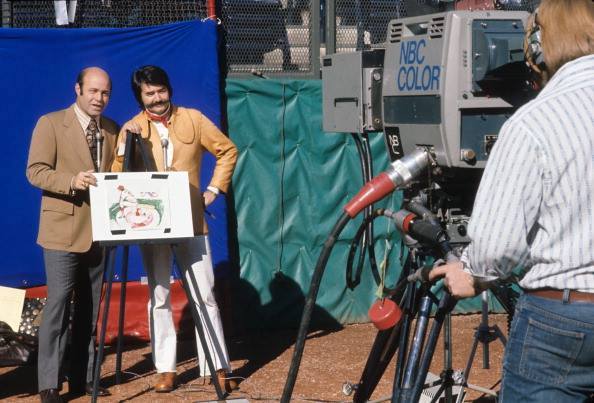

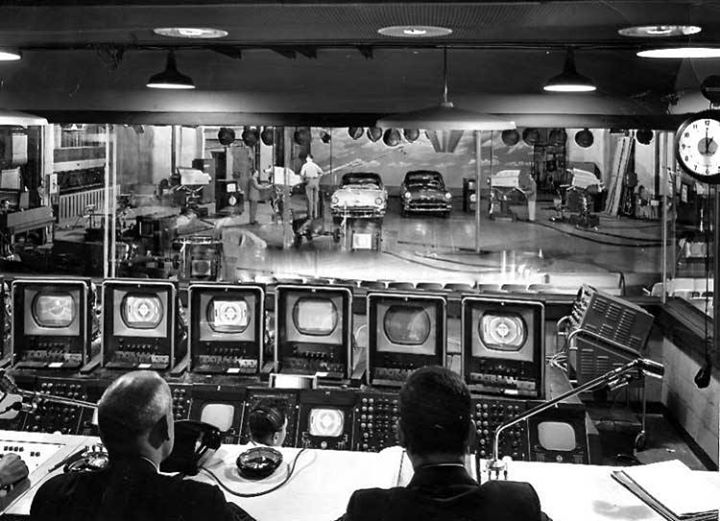

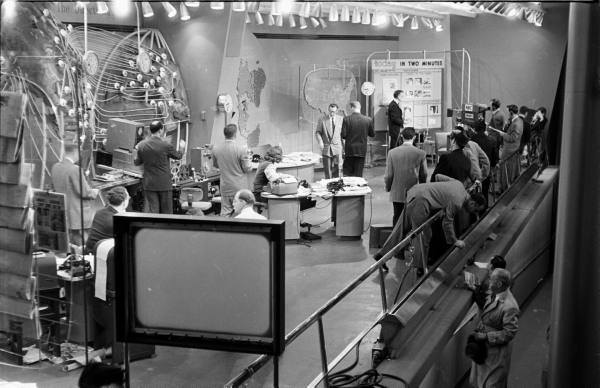

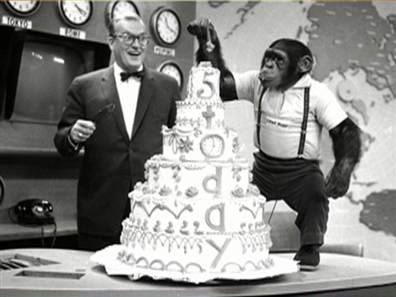

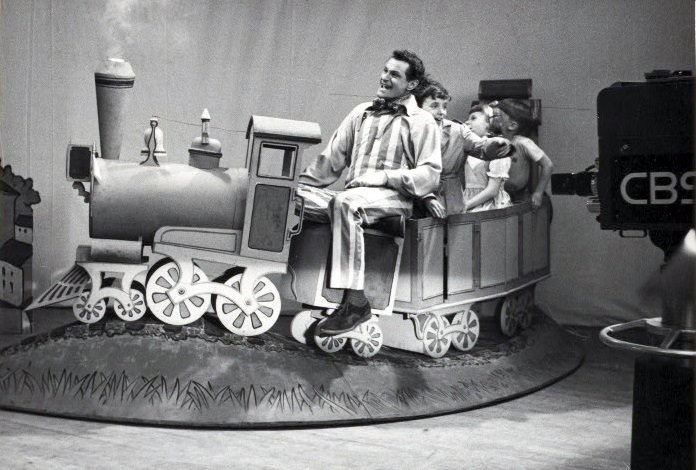

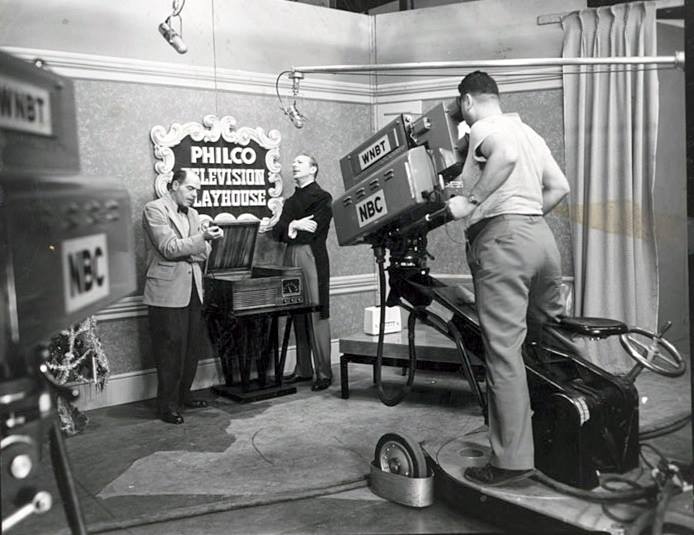

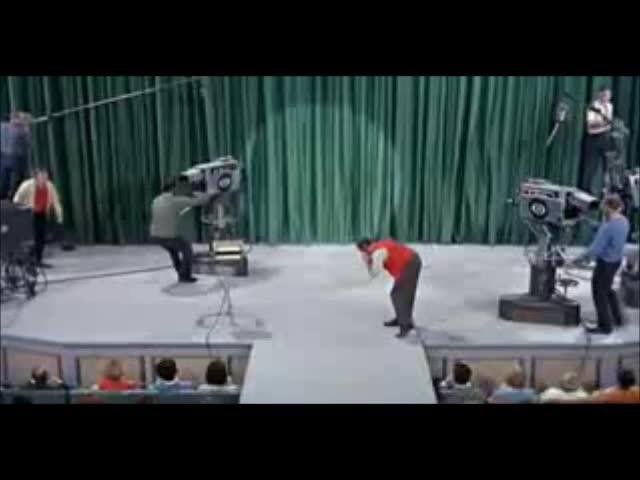

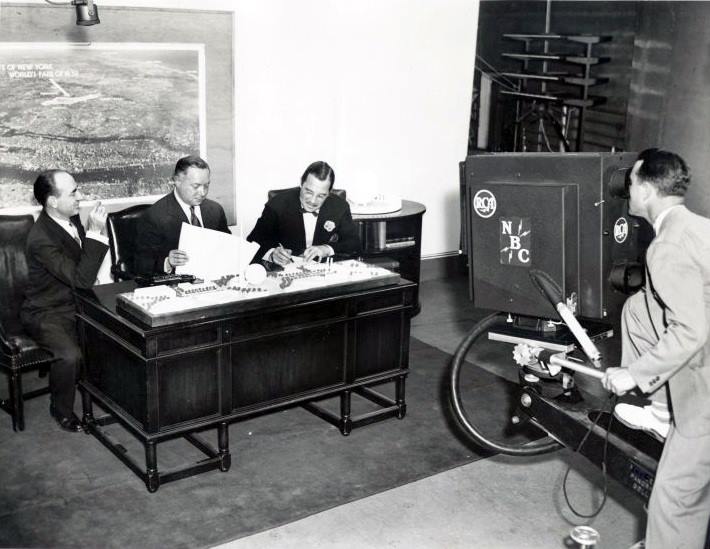

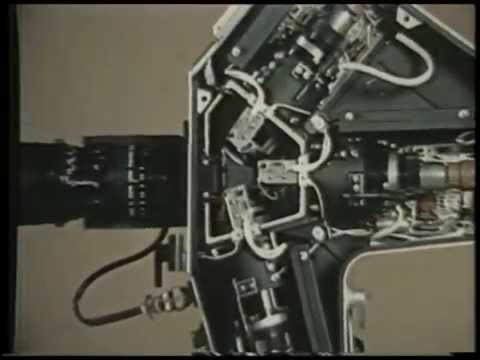

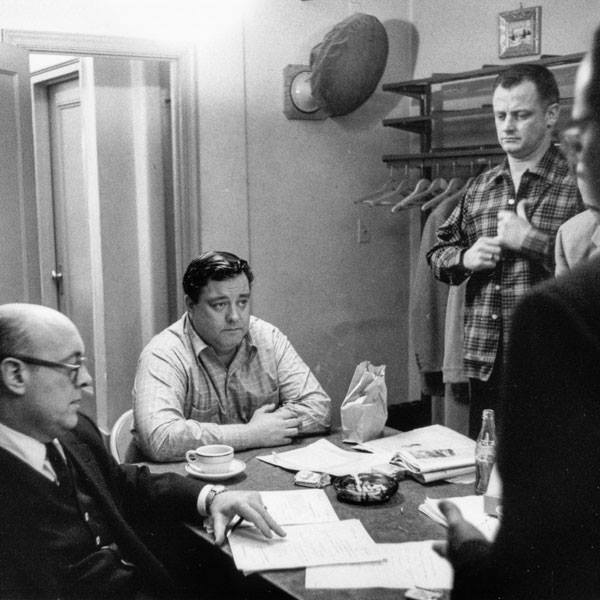

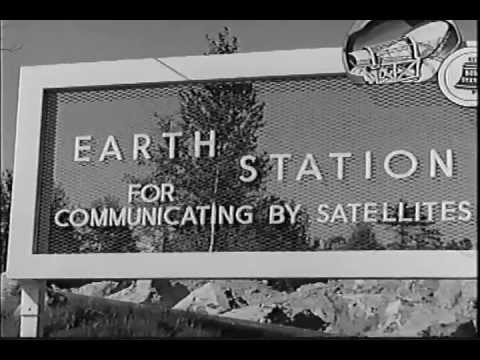

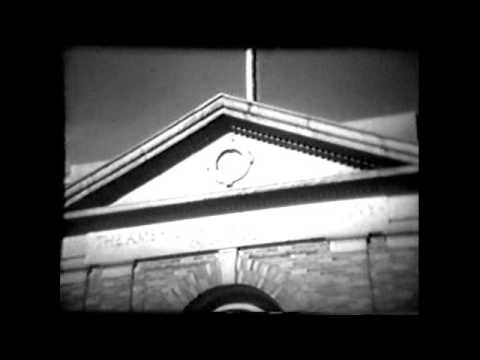



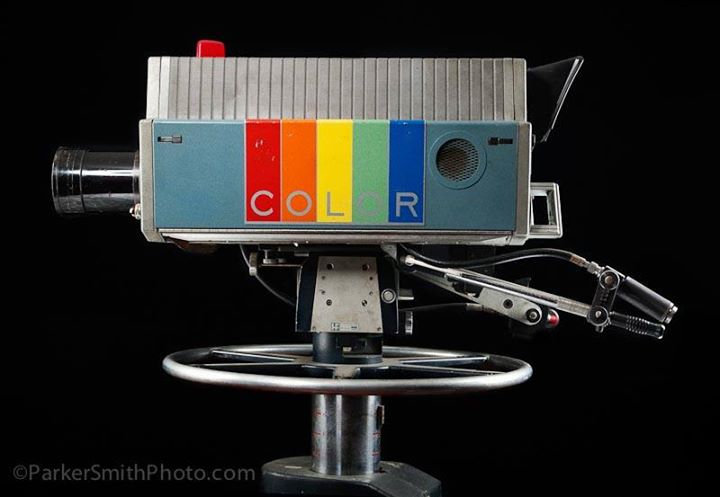



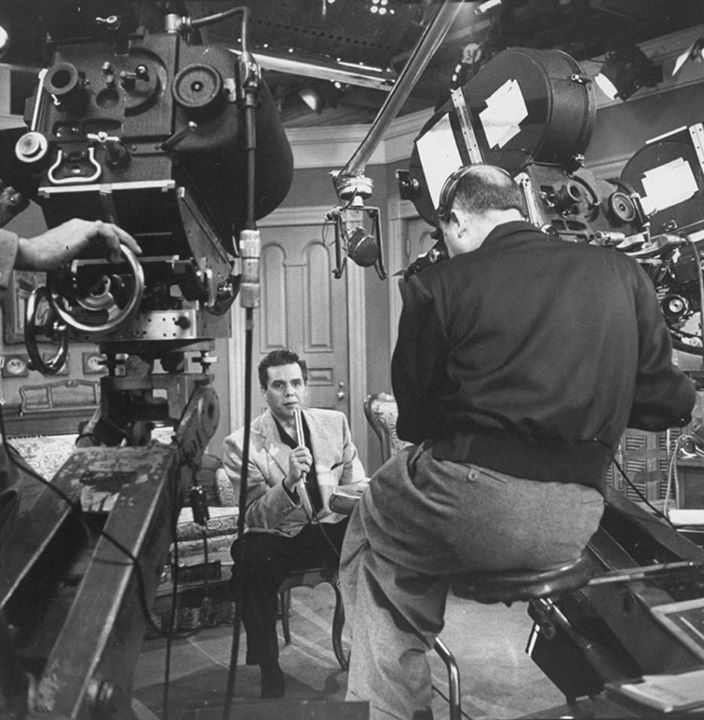

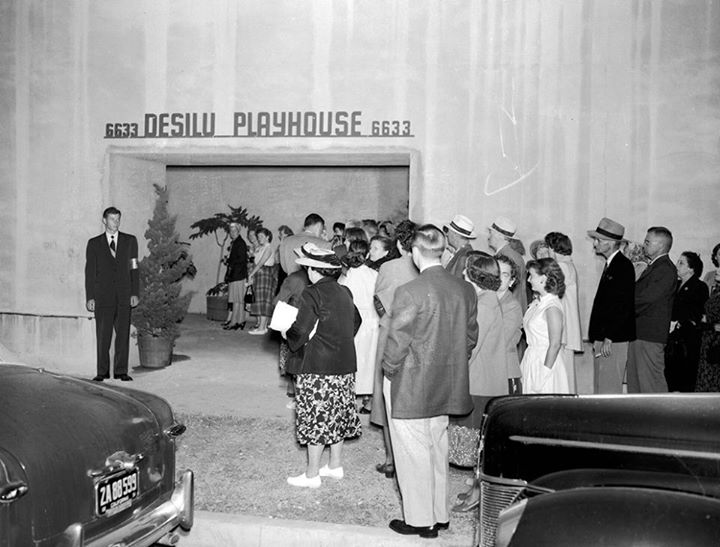

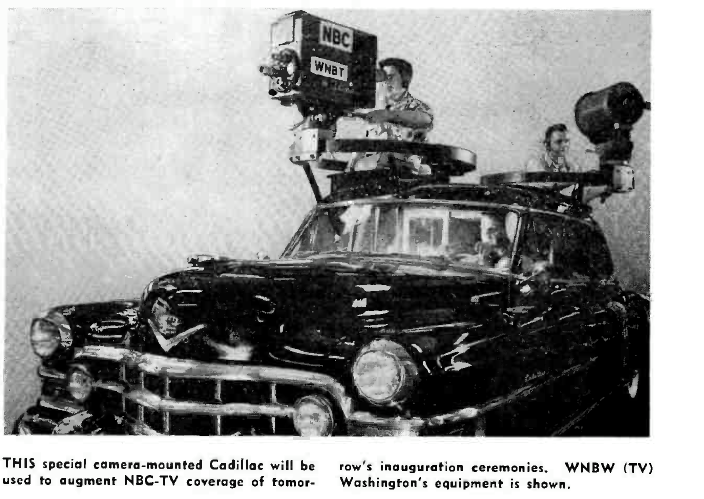

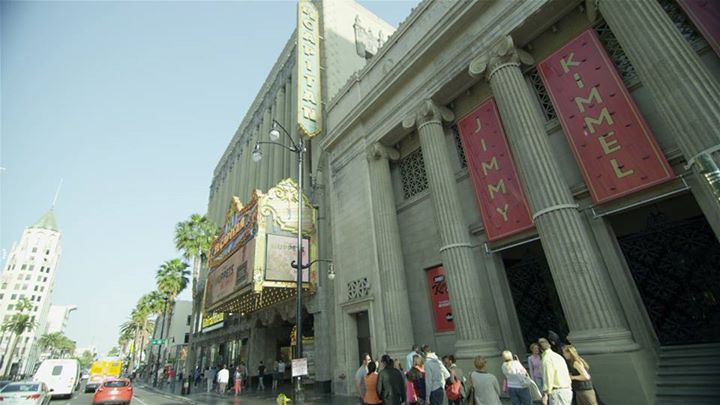

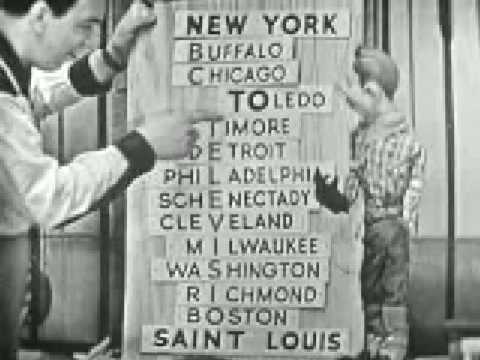

Posts in Category: TV History
Page 71 of 136
« Previous
1
2
3
4
5
6
7
8
9
10
11
12
13
14
15
16
17
18
19
20
21
22
23
24
25
26
27
28
29
30
31
32
33
34
35
36
37
38
39
40
41
42
43
44
45
46
47
48
49
50
51
52
53
54
55
56
57
58
59
60
61
62
63
64
65
66
67
68
69
70
71
72
73
74
75
76
77
78
79
80
81
82
83
84
85
86
87
88
89
90
91
92
93
94
95
96
97
98
99
100
101
102
103
104
105
106
107
108
109
110
111
112
113
114
115
116
117
118
119
120
121
122
123
124
125
126
127
128
129
130
131
132
133
134
135
136
Next » The First Sign Of Trouble At RCA…
On July 14, 2014
- TV History
The First Sign Of Trouble At RCA…
Thanks to John Schipp, here is a great photo of Joe Garagiola and painter Leroy Neiman with Art Parker behind the camera…a Norelco camera!
In 1964, RCA stopped production of the RCA TK41C and was switching over to the TK42. Fred Himelfarb was head of NBC Labs at 30 Rock and had been involved with the testing of the 42 and he, along with his bosses, was not thrilled with the results. About this time, NBC was stepping up it’s game in sports coverage and something had to be done to put more color cameras on their new mobile units.
In 1965, Fred had Norelco deliver a couple of cameras to his lab for testing. Over the course of a year, he made some modifications and changed a few specs which Norelco incorporated into all of their cameras. Fred also added a little “secret sauce” and had Norelco incorporate those changes into 35 special order cameras.
This was a big deal. Here is NBC, the child of RCA refusing to buy RCA’s big new cameras and going to a competitor. This made a lot of waves in Camden and Princeton, but it did force the secret TK44 development team into the lead. The cameras began to come in around September of ’67 and the World Series was coming up, so it was determined that the Norelcos would get a baptism by fire and there is a funny story that goes with that event.
The NBC and Norelco brass were at the first game and had their own special trailer with 4 monitors. Fred was in the control trailer and after the game he went to the Norelco trailer where there was a lot of backslapping. The most praise went to the shot from the left field camera. That’s when Fred told them he’d brought along a TK41C for comparison…guess where that was! Yep…left field.
Fred told me the whole story the year before he died. Just so you know, Mr. Himelfarb started with RCA as an engineer on the TK40s in Camden. When the first ones were shipped to NBC’s Colonial Theater in late 1952, Fred came with them as the direct link back to RCA and made many improvements in the TK41s over the years, including designing the single cable. Now you know. Enjoy and share!
CBS Studio 72…Their Only New York RCA Color Facility
On July 14, 2014
- TV History
CBS Studio 72…Their Only New York RCA Color Facility
In the early 50’s, the network had a Field Sequential Color setup in
The Peace Theater at 1280 Fifth Avenue. This was called CBS Color Studio 57. After RCA won the color war, that studio went back to a black and white facility.
In early 1954, CBS took over an old RKO movie theater at Broadway and 81st Street and called it Studio 72. They expanded the stage from 2000 to 5000 square feet and installed four RCA TK41 color cameras. If you look closely at the photo, you will see a fifth camera under a cover just over the third monitor from the left. That camera is an RCA TK40 which CBS had Philco purchase for it on the sly in 1953 so they could get a look inside.
Although it never got much use, the studio switching system could handle five studio cameras, four telecine cameras, two remote signals and a black signal generator which was necessary to maintain the subcarrier burst signal when the picture faded to black.
There were eight panels where the cameras could be connected with five on the stage and three in the balcony.
Does anyone know what shows may have originated from Studio 72? Also shown it the studio floorplan. Enjoy and share!
Behind The Scenes In The Early Days Of ‘Today’
On July 13, 2014
- TV History
Behind The Scenes In The Early Days Of ‘Today’
Until recently, I had always wondered where this ramp on the first ‘Today’ show set went and why they kept it instead of covering it over. Now I know…this was the short cut to the control room in the basement, but there is an interesting story about the ramp.
Charlie Andrews was one of the original writer/producers for ‘Today’ and tells a funny story about one of the show’s creators Abe Schecter. “Abe was actually the first producer of the show and a hard news kind of guy. He was a wild, profane and tough little guy that was about five feet tall and when he sat, his feet barely touched the ground”.
Andrews sat next to Abe in the control room and when a shot was too long or from the “wrong” camera, he would start to scream about it and would run up the ramp. There was a monitor at the top of the ramp and usually before Abe would get half way up, the shot had changed and he came back to the control room. The crew called this frequent occurrence “‘The Schecter Ramp Dance”. Now you know.
J Fred Muggs…The Inside Story And Some Funny Monkey Business
On July 13, 2014
- TV History
J Fred Muggs…The Inside Story And Some Funny Monkey Business
The story I am about to share is from the book “The Box…An Oral History Of Television, 1920 -1961” by Jeff Kisseloff. I highly recommend it.
The first Associate Producer for the ‘Today’ show was Len Safir, who was also in on the planning for the ‘Tonight’ show. It was his idea to add the chimp to the show and most of this is from his recollections of the events in a paraphrased form from him and Gerald Green.
Len was brought in from NBC’s ‘Tex And Jinks’ show about a month into the ‘Today’ show run as things weren’t going as well as hoped for televisions first early morning show.
Safir thought the show needed some comedy and remembered a cartoon he had seen…a gorilla leaving a desk and a man taking his place and saying, “and now the human side of the news”. He thought, let’s get a monkey, dress him up and put him at a typewriter and every once in a while, cut to him banging away.
He called a pet shop and a few days later a staffer rushed into his office and shouted “there’s one at the elevator”. Two men were there with a baby chimp in diapers. Safir said “He was about the cutest thing you had ever seen”. The next morning, they put him on the show.
All they did was sit him next to Garroway and Muggs was an immediate sensation…the chimp was irresistible. Ratings started to climb and so did J Fred…all over the place. He had the run of the studio and his own cameraman…Jack Heyman who followed him all over the studio and at the window with the street side crowds.
Gerald Green was one of the people tasked by NBC President Pat Weaver to create the ‘Today’ show, and here is his remembrance of the J Fred days. This is the funny part.
“I liked him and he liked me so he never bit me, but he would occasionally bite people he didn’t like or deserved to be bitten, like Martha Ray.”
Green said, you were alright if you petted Muggs and talked to him. Muggs liked Paul Cunningham who put the newscast together overnights and Paul usually stopped to say hello to him when he passed by. One day though, Cunningham was rushed and frazzled by a big breaking story and when Muggs reached out, he told him to F. O.
A few minutes later, someone cracked Cunningham across the back with a broomstick and knocked him out of his chair. Can you guess who did that? If you guessed Muggs, you’re right.
As is usually the case, as Muggs grew older, he became more aggressive and at times, Garroway would be on camera with a hidden hand bleeding from a bite. The search for a new home for J Fred was begun and Marlin Perkins at The Chicago Zoo agreed to accept him and one morning on the show, a three limousine caravan left for the airport with J Fred Muggs. Enjoy and share!
‘Mr. I Magination’…First CBS Childrens Show
On July 12, 2014
- TV History
‘Mr. I Magination’…First CBS Childrens Show
I must admit, I’m to young to have seen this, but have heard about it. Do you remember this?
This show debuted on CBS on April 24, 1949 and ran live as a half-hour weekly show till 1952. In a way, this was the CBS answer to ‘Howdy Doody’ on NBC and ‘The Small Fry Club’ on Dumont, but those shows were M-F shows. It’s likely the WCBS had a local kids show, but I don’t know…do you?
The host, Mr. I. Magination (Paul Tripp), dressed as a train engineer, and each week, different child actors would come in and ask questions about occupations, historical figures and activities and guests would come in to answer. The train could also travel in time so figures like Annie Oakley could be interviewed as is the case in this 1952 video. https://archive.org/details/Mr.I.Magination1952
Guests were as diverse as Damu, a lion tamer from Ringling Brothers Circus, and test pilot Scott Crossfield. Yul Brynner served as the director of the show at times, but did not appear as a performer. Two other actors that were later famous did perform on the show…Walter Matthau and Richard Boone. Incidentally, Tripp later made an appearance on Boone’s ‘Have Gun Will Travel’. Enjoy, share and help us fill in the blanks if you know more on this and ealy WCBS kids shows.
The NBC 8G Studio Cameras…One Of Television’s Rarities
On July 12, 2014
- TV History
The NBC 8G Studio Cameras…One Of Television’s Rarities
NBC’s official grand opening date for 8G, their second ever studio at 30 Rockefeller Plaza is listed as April 22, 1948. Actually, television had been coming from 8G long before that while it was still designated a radio studio.
The first show ever to come from 8G was also television’s first variety show…’Hourglass’, which debuted May 9, 1946. Later that year, ‘Let’s Celebrate’ was done here as a one time show on December 15, 1946 with Yankee’s announcer Mel Allen as host.
‘The Swift Show’ (a Swift Company sponsored game show), and ‘Americana’ (a game show about American history) started here in 1947.
With the RCA TK30 planned release date of late 1946, I have often wondered why the NBC engineers built these cameras to use in 8G but recent research put a new face on this and answers a few big questions.
NBC knew television had to grow fast after WW II, but there were still war related shortages, like phosphorus for kinescope screens and military embargos on technology like the Image Orthicon which was used in guidance systems. Believing that new cameras would come more slowly than RCA was planning on delivery, NBC engineers knew they had to have more than the cameras in 3H to work with. On the sly, the got four RCA Image Orthicons and four seven inch kinescopes for the VF and started to work building a camera I call the NBC ND-8G. The ND was an NBC engineering code that stood for New Development.
I think these cameras were actually ready for use by the spring of 1946. ‘Hourglass’ debuted from 8G on May 9, 1946 which was six months before the TK30 scheduled release in October. NBC got their first four TK30s in late June, just in time for the Billy Conn – Joe Louis rematch at Yankee Stadium.
I don’t think 8G, as a radio studio, had built in audience seating like 6A, 6B and 8H, but it was thankfully three times the size of NBC’s only other television studio, 3H. “Radio Age” states that 8G could handle four consecutive shows, which meant the often fifteen minute and half hour shows, with only one small set, could be staged one after the other from different walls of the studio.
Below we see the cameras in action on ‘The Philco Television Playhouse’ which originated in 8G beginning in October of 1948. Notice the camera peephole in the wall covered by a painting. Enjoy and share!
‘The Patsy’…Marconi Mark VIs and RCA TK60s In Action
On July 12, 2014
- TV History
‘The Patsy’…Marconi Mark VIs and RCA TK60s In Action, Exclusive
From the 1964 Jerry Lewis, Paramount release, ‘The Patsy’, here is an edited clip you can only see here. This gives us a good look at two classic cameras in action. The Marconi Mark IV cameras in the first part are owned by KTLA which was then owned by Paramount as well.
‘The Ed Sullivan Show’ used Marconi Mark IVs, but in the movie version of the show, they are using RCA TK60s. Had they switched the cameras used in the shoots, they would have been historically correct, but hey…it’s only make believe right? By the way, Lloyd Thaxton is the “host”. Remember his shows? Enjoy and share!
History In The Making…The Start Of RCA’s World’s Fair Exhibit
On July 12, 2014
- TV History
History In The Making…The Start Of RCA’s World’s Fair Exhibit
In these newly discovered photos. we see from left to right NBC President Lexon Lohr and RCA Chairman David Sarnoff signing the agreement to build the RCA Exhibition Building with Grover Whalen, who was President of the World’s Fair Corporation.
I don’t have a firm date for this, but suspect this is 1937. The photos are among the first that show us the original RCA Iconoscope studio cameras in NBC Studio 3H. These dark color cameras precede the RCA A500 Iconoscope cameras, which were painted silver.
The NYWF of 1939–1940 was the first exposition to be based on the future, with an opening slogan of “Dawn of a New Day”, and it allowed all visitors to take a look at “the world of tomorrow”.
Until just before the fair opened on April 30, 1939, Studio 3H was under the control of RCA and had been since it was converted from radio in 1935. In early April, 3H was put under the control of NBC Television in preparation for the network’s official launch which occurred on April 30, 1939 with live broadcasts of the fair’s opening with remarks from President Franklin Roosevelt. Enjoy and share!


Introducing The RCA TKP 45 & TK 76 Prototypes
On July 11, 2014
- TV History, Viewseum
Ultra Rare! Introducing The RCA TKP 45 & TK 76 Prototype…
The RCA TKP 45 was the first portable color camera without a backpack and debuted in 1974, two years before the TK 76 color ENG camera. At the 6:19 mark, you’ll see the TK 76 prototype that fortunately didn’t look anything at all like the final version.
This RCA sales tape includes footage from the field testing, some of which was at The Rose Parade. This was probably the first ever EFP or Electronic Field Production camera as it was mostly built for that and not Electronic News Gathering (ENG), but would work in either application. Our friend Lou Bazin was the principal RCA engineer on this, and many other RCA camera projects including the TK44, 45, 46 and 47. Enjoy and share!
What A Team! Their First Teaming And How The Met!
On July 11, 2014
- TV History
What A Team! Their First Teaming And How The Met!
This may be the first candid photo of Jackie Gleason and Art Carney ever taken. Gleason looks very young here and this was probably taken during his tenure as host of the Dumont ‘Cavalcade Of Stars’.
On the Dumont show, Gleason’s regular characters included Charlie Bratten, a lunchroom loudmouth who always spoiled the meal of the mild mannered Clem Finch, played by Carney. Gleason and Carney developed a good working chemistry, and Gleason recruited Carney to appear in other sketches, including of course, The Honeymooners.
In a way, Morey Amsterdam was responsible for this pair meeting. When Morey was the host of ‘Cavalcade Of Stars’ before Jackie’s arrival, he brought in Carney for a few sketches and the director, Joseph Cates (brother of Gil Cates), liked him. When Gleason took over the hosting job and wanted a new straight man for some of his sketches, Cates introduced him to Art Carney.
On both the radio and television versions of ‘The Morey Amsterdam Show’ (1948-50), Carney played a character known as Charlie The Doorman. Carney had seen Gleason in his first television work as the star of ‘The Life Of Riley’, That show only lasted part of one season but it was not canceled because of low ratings or Gleason’s desire to leave…it was a dispute between the producer and the sponsor. Now you know how one of comedy’s best teams came together. Enjoy and share!


July 11, 1962…Telstar Beams First Transatlantic Television Signal
On July 11, 2014
- TV History
July 11, 1962…Telstar Beams First Transatlantic Television Signal
Fifty two years ago today, Telstar went into operation as the world’s first telecommunications satellite. In this excellent video. hosted by NBC newsman Frank Blair, we get the whole story and at the 7:15 mark, Ed Hurlihe takes over the narration with a film of the first images transmitted. Enjoy and share!
https://www.youtube.com/watch?v=uHC5fkYch0Q
50 year anniversary of the World’s First Transatlantic Television Signal More information at http://telstar50.org


July 10, 1950…’Your Hit Parade’ Comes To Television
On July 11, 2014
- TV History
July 10, 1950…’Your Hit Parade’ Comes To Television
The video here is from New Year’s Eve of 1955 from NBC Studio 8H and starting at the 2 minute mark, “Memories Are Made Of This” is performed by a singer posing as a stage manager with him getting a ride on the Panoram dolly camera near the end.
The show started on the NBC Radio Red Network in 1935 and came to NBC television viewers on Saturday nights from 10:30 till 11, from July 1950 till the summer of 1957. The show was in color from ’54 till ’57 when NBC canceled it.
In the fall of ’57, the show ran on CBS for a year, but rock and roll had put a big dent in the show’s popularity and that was it’s last season. Enjoy and share!


Did You Know A Cameraman Has The Most Emmy Nominations? It’s true!
On July 11, 2014
- TV History
Did You Know A Cameraman Has The Most Emmy Nominations?
It’s true! His name is Hector Rameriz and he is considered one of the most successful artists in Emmys history. His career spans four decades and yesterday, he received his 72nd nomination for an episode of ‘Dancing with the Stars’, maintaining his record as the most nominated individual in Emmy history. He’s followed by Sheila Nevins, the president of HBO Documentary Films, who now has 67 nominations.
The Emmy Legends video interview is below and at the 45:00 mark, Hector talks about his work on ‘The Carol Burnett Show’ and tells us about the day Carol and Harvey Korman did the famous ‘Gone With The Wind’ parody. They had to stop for a half hour to get all the laughs out of their systems! Good luck Hector! Enjoy and share!
My RCA TK42
On July 10, 2014
- TV History
My RCA TK42
Here is another of the professionally shot portraits of a few of my cameras. This TK42 is forty seven years old and was built in 1967. By my count, there are only about 20 of these that have survived.
RCA built the TK42 from 1965 till 1969. Of the 376 made, only 6 were sold to networks and that network was the Canadian Broadcasting Company. The other 370 went to local stations in the US. When the internal lens sticking (overheating) problem became evident, RCA came out with the external lens TK43 in 1967 and built 93 of them between then and 1970. Enjoy and share.


The RCA TK47, Rush And A Beautiful Camera Op!
On July 10, 2014
- TV History
The RCA TK47, Rush And A Beautiful Camera Op!
From 1987, here’s the Rush song ‘Time Stands Still’…but that’s the only thing still here. This opens in a television studio with every man’s blond fantasy behind the RCA TK47. You’ll see a lot of old video tricks in this, but they were new then and very overused. Take your Dramamine and click on the video.
By the way, the TK47s in the US were blue and beige, but I think RCA painted the export cameras different colors as I have seen red ones in Europe and this may have been done in Canada. Thanks to our friend in Argentina, Eduardo Vilela for sharing this.
#t=85″ target=”_blank”>https://www.youtube.com/watch?v=dMSFqXGZ5TQ #t=85
Amazon: http://bit.ly/Rush2112SDE_Web Music video by Rush performing Time Stands Still. (C) 1987 The Island Def Jam Music Group
‘I Love Lucy’…Warming Up The Audience
On July 10, 2014
- TV History
‘I Love Lucy’…Warming Up The Audience
Here is a new shot of Desi doing the audience warm up for the show. Part of his routine was to tell the audience not to worry about having their view blocked by the cameras, because “they would never be in the way”. At that point, all three dollied in for a tight shot and no one could see Desi. This always got a laugh. By the way, these Mitchell cameras are fitted with 1000 foot magazines which was good for about eleven minutes. Enjoy and share!
Desilu…In The Beginning There Was 6633 Romaine Street
On July 10, 2014
- TV History
Desilu…In The Beginning There Was 6633 Romaine Street
During the first few years of ‘I Love Lucy’, Desilu Productions rented space at General Service Studios, which is now the Hollywood Center Studios, on Santa Monica Boulevard and North Las Palmas Avenue.
Desilu used Stage Two which was named Desilu Playhouse and a special entrance was created at 6633 Romaine Street on the south side of the lot allowing entrance into the Desilu Playhouse.
The second photo shows Desi Arnaz on the steps to the Culver office. During its heyday, Desilu Productions owned one of the largest and most complete studio facilities in the world for the production of television, motion picture, industrial and commercial films.
Between 1957 and 1967, it was the only film producer in the industry that operated and maintained three separate studios, — Desilu Gower, Desilu Culver, and Desilu Cahuenga — each possessing certain distinct physical features designed to meet every possible production requirement.
The three studios included a total of 36 soundstages and 500 offices situated on 63 acres of land, with building and stage space comprising approximately 1.2 million square feet. They owned four more studios than MGM and eleven more and Fox.
Normal personnel consisted of approximately 400 employees, with this figure rising to 1,800 at maximum production level. With the exception of regular staff members, Desilu engaged most of its creative, artistic and production personnel on a show-by-show basis when necessary. Because of Desilu’s long-standing
industry-wide record of fine labor-management standards, it consistently drew to its productions the cream of Hollywood’s creative and production talent.
The World’s First And Only Camera Limousine
On July 9, 2014
- TV History
The World’s First And Only Camera Limousine
I think this Cadillac limousine was first used on President Eisenhower’s inauguration on January 30, 1953. It was NBC’s mobile unit purchased to use in the parade, just ahead of the President’s car. I think the microwave signal from the car was shot to an NBC truck that was nearby and was sent on to the tower pickup from there.
There probably was not pool coverage of the parade route, but if there was, I’m pretty sure this was a proprietary vantage point for them. Enjoy and share.
The ODD History Of The TWO El Capitan Theaters in Hollywood….
On July 9, 2014
- TV History
The ODD History Of The TWO El Capitan Theaters in Hollywood….
The El Capitan Theater…a very familiar name to movie and TV fans, but did you know there were two El Capitan Theaters in Los Angeles? There were, and the only thing they had in common was their famous name.
In this photo, you see the home of ‘Jimmy Kimmel Live’ next to the original El Capitan and the show comes from what was once the Hollywood Masonic Temple. This is now called The El Capitan Entertainment Center at 6838 Hollywood Blvd. This movie theater is the site of the original El Capitan which opened in 1926 and this has never been a radio or television studio. Both are now owned by Disney.
You probably know the “other” El Capitan better as The Hollywood Palace at 1735 Vine Street. It’s now called The Avalon Theater, but when it was built in 1927 it was the Hollywood Playhouse.
The original El Capitan location on Hollywood Blvd., started as a legitimate theater and presented live plays, with over 120 productions including such legends as Clark Gable and Joan Fontaine. By the late 1930s, business was faltering. When Orson Welles was unable to locate a theatre owner willing to risk screening Citizen Kane, he turned to El Capitan, and in 1941, Citizen Kane had its world premiere there.
It closed for renovation and re opened on March 18, 1942 as the Hollywood Paramount Theatre. Its inaugural film presentation was Cecil B. DeMille’s Technicolor feature ‘Reap the Wild Wind’, starring Ray Milland, John Wayne, Paulette Goddard and Raymond Massey.
Meanwhile at 1735 Vine Street, that property was renamed The El Capitan Theatre in 1943, and was used for a long-running live burlesque variety show called Ken Murray’s Blackouts. CBS Radio also did shows from here including ‘My Favorite Husband’ starring Lucille Ball.
In the 1950s, still under the name of El Capitan, the theatre became a television studio, and it was from a set on its stage that Richard Nixon delivered his famous “Checkers speech” on September 23, 1952. This event is often mistakenly said to have taken place at the El Capitan Theatre on Hollywood Boulevard.
The Vine Street El Captain Theater was also home to some episodes of NBC’s ‘Colgate Comedy Hour’, and ‘This is Your Life’. In 1963, ABC bought the theater and named it The Jerry Lewis Theater after the show it was to be home to, but the Lewis show died after just 13 weeks. Within a few months, ABC had created ‘The Hollywood Palace’ show and renamed the theater yet again.
There are many similar situations in New York and the one that comes to mind is The Ziegfeld Theater, but that’s another story for another day. Enjoy and share this!


The 14 City NBC Television Network…1949
On July 9, 2014
- TV History
The 14 City NBC Television Network…1949
From the ‘Howdy Doody Show’, we get some interesting information on the status of NBC’s coverage of the country via the AT&T links for live television. This show was kinescoped and mailed to most of the other major metro areas not covered by the growing network.
My home town of Atlanta was added on October 4, 1950, just 27 days before I was born.
Page 71 of 136
« Previous
1
2
3
4
5
6
7
8
9
10
11
12
13
14
15
16
17
18
19
20
21
22
23
24
25
26
27
28
29
30
31
32
33
34
35
36
37
38
39
40
41
42
43
44
45
46
47
48
49
50
51
52
53
54
55
56
57
58
59
60
61
62
63
64
65
66
67
68
69
70
71
72
73
74
75
76
77
78
79
80
81
82
83
84
85
86
87
88
89
90
91
92
93
94
95
96
97
98
99
100
101
102
103
104
105
106
107
108
109
110
111
112
113
114
115
116
117
118
119
120
121
122
123
124
125
126
127
128
129
130
131
132
133
134
135
136
Next »